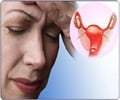Although women are four times more likely than men to develop osteoporosis, or porous bone, one in 12 men
Although women are four times more likely than men to develop osteoporosis, or porous bone, one in 12 men also suffer from the disease, which can lead to debilitating - or even life-threatening - fractures, mainly of the spine, hip and wrist. The underlying causes of osteoporosis are numerous, but in women, low estrogen levels after menopause have been considered an important factor.
As for men - new research at Washington University School of Medicine in St. Louis has shown that low amounts of active estrogen metabolites also can increase their osteoporosis risk."Most people don't think about estrogen in men, but men actually have somewhat more estrogen on average than do postmenopausal women," says Reina Armamento-Villareal, M.D., assistant professor of medicine in the Division of Bone and Mineral Diseases and a bone specialist at Barnes-Jewish Hospital. She is senior author of a new study in the journal Calcified Tissue International.
"Research by other groups had suggested that estrogen may be more important than testosterone for maintaining bone health in men," she says. "So we designed a study to look at male estrogen levels and bone density."
When estrogen circulates in the body, it passes through the liver where several enzymes convert the standard hormone to other forms - some of these forms, or estrogen metabolites, are active and some are inactive. Individuals differ in how they process estrogen, so the levels of these estrogen metabolites will vary among people. No previous studies have addressed the role of estrogen metabolism and the forms of circulating hormone in male osteoporosis.
The Washington University researchers found that the amounts of active estrogen metabolites are a strong predictor of bone mineral density in the men they studied. Testing hormone levels and bone density as measured by DXA (dual X-ray absorptiometry) scans in 61 men age 50 or older, the researchers saw that men with higher levels of active estrogen metabolites also tended to have higher bone density. Conversely, men with lower levels of these hormones tended to have lower bone density.
Testosterone levels did not affect bone density in these study subjects. Testosterone seems to be responsible for the larger size and thicker outer layers of male bones, but estrogen is possibly a key hormone for maintaining peak bone mineral mass in men, according to the authors.
Advertisement
Fractures due to osteoporosis are a significant health threat in the elderly. According to Villareal, 25 percent of those who suffer a hip fracture die within a year, and 40-50 percent have some degree of disability or need nursing home care. "It's a very serious problem," she says. "People of retirement age are looking forward to their leisure time, but if they fracture a hip, there are so many things they won't be able to do."
Advertisement
Source-Eurekalert
LIN/B











